
Tangerine Peel Tincture for Bronchitis and Dry Cough
It’s time! You’ve patiently waited, and now your favorite part of the day has arrived… snack time! You’ve brought the perfect little jewel known as the tangerine with you. Now all you have to do is peel it to get the juicy goodness inside. But hold up!
Do NOT throw those peels away. Those peels are worth their weight in gold, and you will be glad you saved them when cold and flu season comes around.
Tangerine peel health benefits are well understood in Traditional Chinese Medicine (TCM). In fact, TCM practitioners have used citrus peel extracts and teas, including tangerine peel tea, for thousands of years to treat different ailments. Chinese traditions also associate the gifting of tangerines and oranges with the abundance of happiness and prosperity. Happy and healthy? Sounds pretty good, right?
So, what exactly is a tangerine?
Technically, tangerine is a type of orange, but just like flowers and other fruits, there are subclasses of oranges. And though tangerine is technically a type of mandarin orange, not all mandarin oranges are tangerines. Tangerine mandarins are darker in color and sweeter in taste than other mandarins.
Now that that’s settled, let’s examine some of the potential tangerine peel health benefits. Citrus peels, in general, have a lot of medicinal qualities. And the tangerine peel is no exception… especially if you’re looking for effective cough and cold remedies.
Tangerine Peel Benefits
The peel of the tangerine contains a bit more than vitamins and minerals, which are also great benefits of tangerine peel. Like other citrus peels, tangerines have very high levels of vitamins C, A and B along with powerful carotenoids, alpha-carotene and beta-carotene, which lend to the tangerine’s beautiful rich color.
But arguably, the most potent healing aspect of the tangerine peel comes from three naturally occurring chemicals—hesperidin, tangeretin, and nobiletin. These three constituents work cohesively with the vitamins and antioxidants in tangerines to form an arsenal for combating cough and cold symptoms. These disease-fighting flavonoids are found in higher concentrations in peels than in the juice or even the flesh of tangerines, and your body easily absorbs them.
Tangerine peels have the noble ability to help:
- Detox the liver

- Stimulate lymphatic drainage
- Knock out cough, cold, flu, and infection
- Boost immunity
- Reduce inflammation
- Lower cholesterol
- Lower blood sugar
- Dry up mucus and phlegm
⇒ The World War II Cough Suppressant that Still Works Today (Video)
The role of nutrition has been grossly underrated in preventing illness. In fact, recent studies at the University of Verona conclude that certain foods naturally rich in the substances mentioned above have many potential benefits for health. Also, the naturally occurring chemicals in tangerine peels could have anti-viral action and can be paramount in modulating the immune system and defending cells from the oxidative stress associated with infection—including viruses.
The anti-inflammatory activity of citrus peel extracts correlates strongly with the content of nobiletin and tangeretin. It’s also been noted that inducible nitric oxide synthase (iNOS) in inflammatory cells and increased airway production of nitric oxide (NO) are well-recognized as key events in inflammation-related respiratory tract diseases. In other words, nobiletin and tangeretin can help reduce inflammation in the lungs and bronchial tubes, possibly preventing symptoms from hitting a boiling point where they are no longer manageable at home.
Interestingly, if you heat these two flavonoids to at least 202℉, they become significantly stronger. It’s true!
And in this recipe, we are tincturing our tangerine peels, which also makes them stronger. The takeaway… add your tangerine tincture to a cup of hot tea, and voila! You have yourself a mighty strong little cough and cold remedy.
Tangerine Peel Tincture
**Quick Note: Citrus peels, like other fruit peels, can have a TON of pesticides sprayed on them. Therefore, it’s imperative to buy organic and non-GMO fruit, especially when you are making herbal tinctures out of them.
You will need:
- 2-3 tangerines (you only need the peels)
- 1 cup of high-proof grain alcohol or pure vodka
- 2 pint-sized jars and 1 ring to fit
- 6×6 square of cheesecloth
- Storage bottles
- Dehydrator (optional)
Instructions
- Wash your tangerines well with cold water. Then peel them and set the peels aside. You can eat the inner parts or throw them away. We will not be using them.

- Place the tangerine peels in the dehydrator for two to three hours. If you do not have a dehydrator, it’s okay. You can let the peels air dry. Instead of the dehydrator, just spread them out on a towel in a warm, dry place for 24-48 hours. Once they become stiff, they are good to use for your tincture.

- Remove the tangerine peels from the dehydrator tray and place them in a jar.

- Cover the peels with a cup of grain alcohol or vodka, whichever you choose to use. If it’s not enough, just add more. You may need to add more alcohol throughout the tincturing process as alcohol does tend to evaporate. You can also choose a lid instead of cheesecloth, but the alcohol may cause the ring to rust when the jar forms condensation.

- Place the jar in a cool dark place like a cupboard for four to six weeks.

- After four to six weeks, your tincture is ready. It should be a dark yellow to orange color. Remove the jar from the cabinet and pour the contents into the second jar.

- Divide the tangerine tincture into dropper bottles if desired. You can also keep it in the jar if you want. It should last up to two years when stored in a cool dry place.

Dosage Instructions
Using a dropper, drip 5-10 drops of tincture into a hot cup of tea or water. Try adding ginger, cinnamon, or honey for a delicious healing tonic!
It would be best if you didn’t use this tonic on children under two years old. Kids under the age of twelve should only use 5-7 drops. It should go without saying, but the younger the child, the fewer drops are needed.
Hot water evaporates the alcohol. Remember that hot water also makes the tincture stronger!
You may also like:
How to Make The Most Powerful Detox Drink at Home
A Simple “At-Home” Protocol for the Flu and Other Respiratory Issues (Video)
Don’t Throw Away Your Peels, Do This Instead!
5 Plants Similar to Insulin That Lower Your Blood Sugar
10 Herbs That Kill Viruses and Clear Lungs

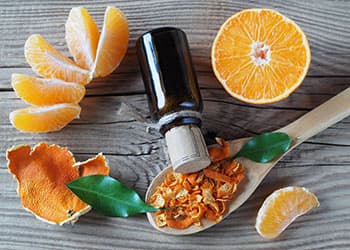
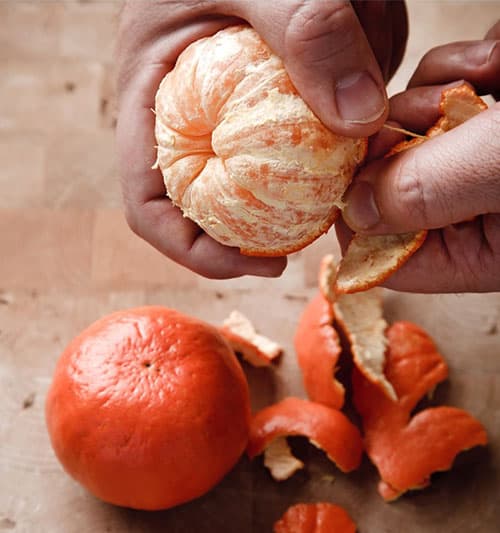
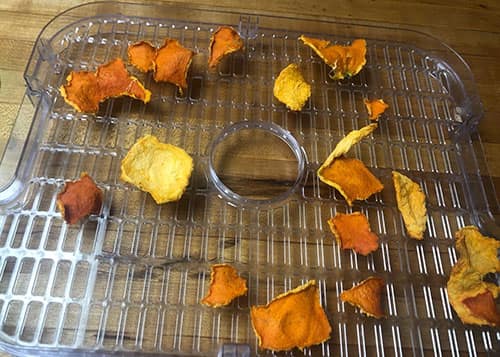
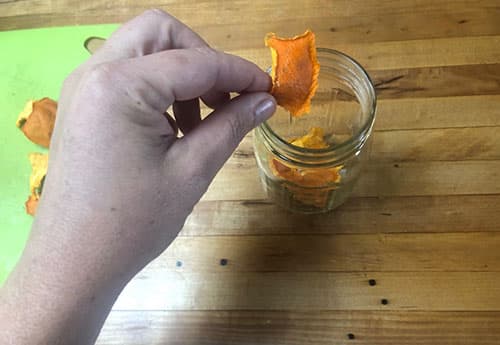
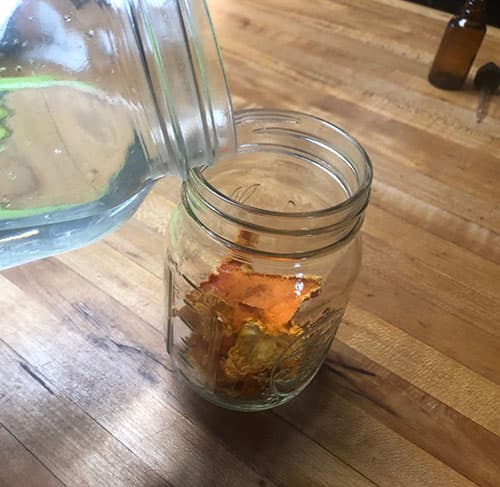
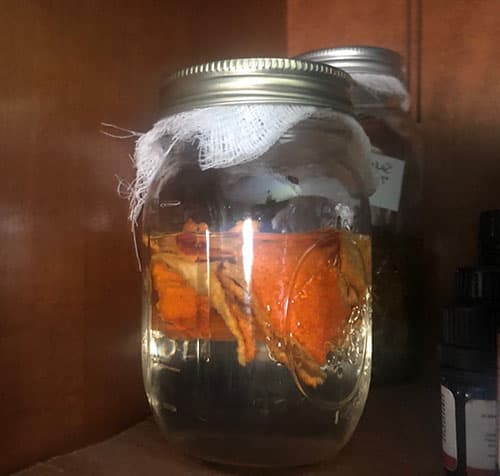
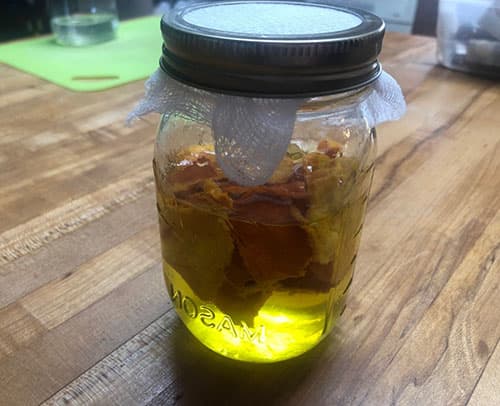
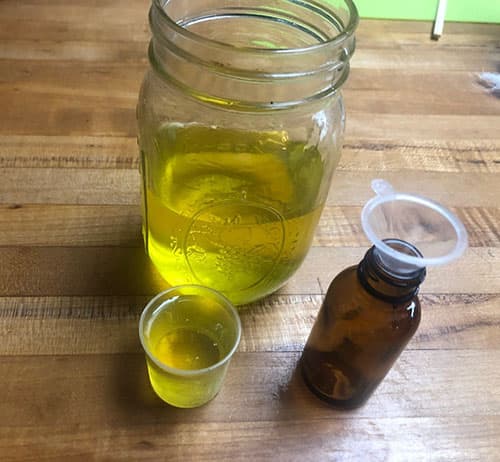
what else can be used instead of alcohol
Apple cider vinegar, or vinegar in general, can be used to make tinctures for those avoiding alcohol. It will take the same amount of time to make.
Hello Vida,
Thank you for your question!
You can either use food-grade vegetable glycerin or apple cider vinegar if you don’t want to use alcohol..
The article below might be useful to you:
https://thelostherbs.com/how-to-make-a-tincture-using-apple-cider-vinegar-instead-of-alcohol/
Many blessings and good health!
Thank you! Is there any way to speed this process up if you need it now vs in 6 weeks?
It’s not like this recipe, but it is composed of the skins of lemons and oranges. This particular Lemonade, got me through COVID. And, I’ve never really caught a cold since I’ve been making it. It comes from an episode of Max Miller’s Tasting History: The Sweet History of Lemonade https://www.youtube.com/watch?v=LcnZAAoq5mg
Hello Mary-Anne,
Tinctures usually need to sit for a minimum of 2-6 weeks. The longer it sits, the more potent it will become.
Many blessings and good health!
I love these healthy suggestions keep them coming
Hi Anna,
We are delighted to hear that our work is helping people gain valuable knowledge about herbal remedies!
Many blessings and good health!
On the YouTube channel Rain Country, Heidi uses a food grade glycerin with a little water to make tinctures that are child safe … https://youtu.be/e1elswap018
I’m considering the use of white vinegar. Will that significantly change the flavor?
Hello Kym,
We recommend using raw apple cider vinegar instead of white vinegar.
The article below will provide you with more information and step-by-step instructions on how to make a tincture with ACV:
https://thelostherbs.com/how-to-make-a-tincture-using-apple-cider-vinegar-instead-of-alcohol/
Many blessings and good health!
Would this also work with mandarines? Not sure if this is the same fruit but different name.
Hello Julie,
Thank you for your interest in this recipe! We really appreciate it.
You can use any citrus peel you like for this tincture and still reap very similar benefits.
Tangerines are commonly referred to as mandarins in the United States. However, not all tangerines are mandarins, and not all mandarins are tangerines. Tangerines, which are grown in warm climates all over the world, are slightly more cold-weather tolerant than larger varieties of sweet oranges.
Many blessings and good health!
Why dehydrate the tangerines? You destroy the oils that are in citrus fruits, which is one reason they are so healthy for you. I would leave them fresh, as the alcohol will prevent mold.
Hello Carol,
Thank you for your comment!
Similar to dried herbs vs fresh herbs, dried citrus peels are much more potent than fresh peels.
Many blessings and good health!
Can you tell me which book has the cowboy cough syrup and bronchitis /dry cough recipes? I would like to purchase a paper back book. Thank you so much